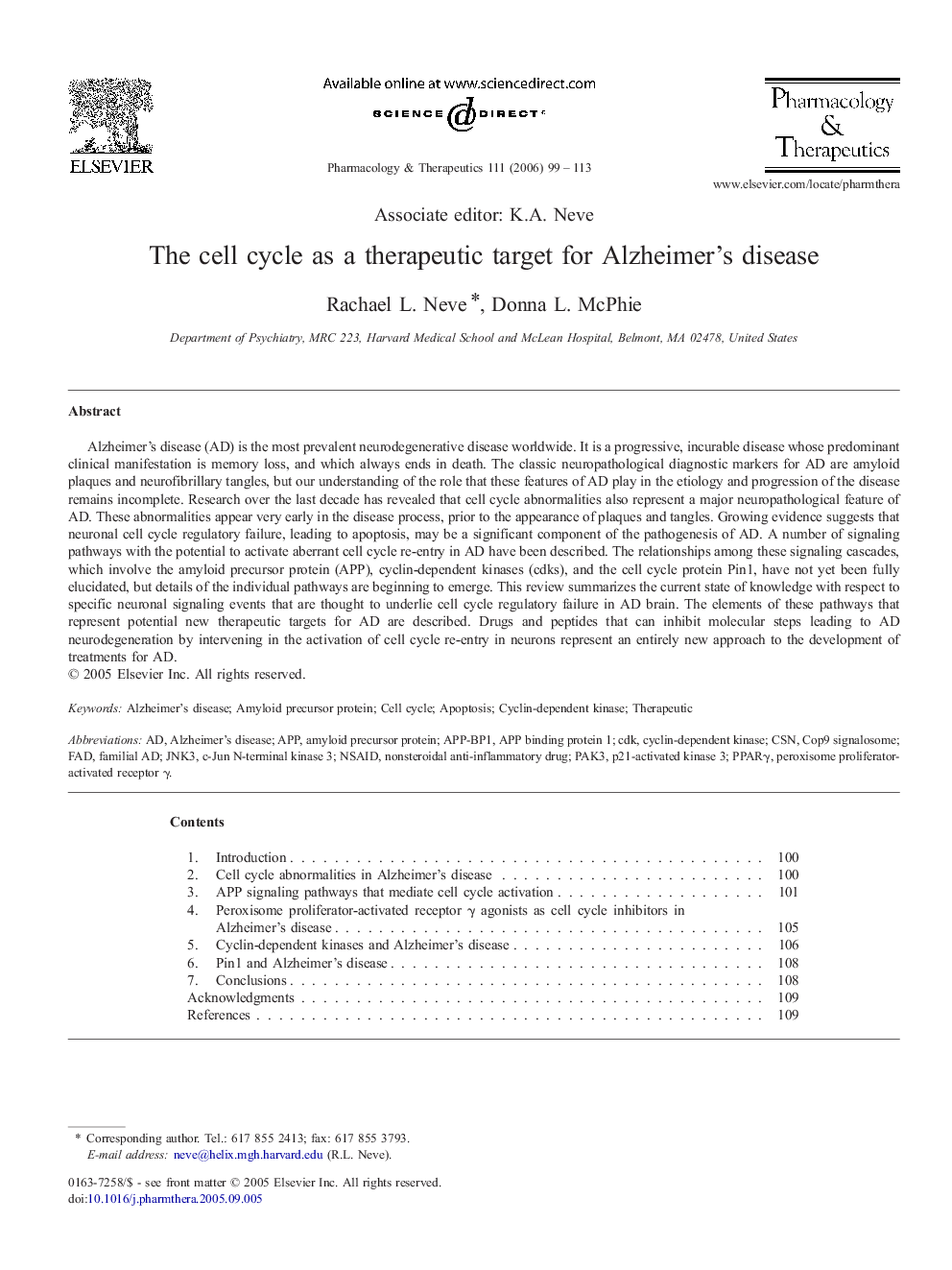| Article ID | Journal | Published Year | Pages | File Type |
|---|---|---|---|---|
| 2564328 | Pharmacology & Therapeutics | 2006 | 15 Pages |
Alzheimer's disease (AD) is the most prevalent neurodegenerative disease worldwide. It is a progressive, incurable disease whose predominant clinical manifestation is memory loss, and which always ends in death. The classic neuropathological diagnostic markers for AD are amyloid plaques and neurofibrillary tangles, but our understanding of the role that these features of AD play in the etiology and progression of the disease remains incomplete. Research over the last decade has revealed that cell cycle abnormalities also represent a major neuropathological feature of AD. These abnormalities appear very early in the disease process, prior to the appearance of plaques and tangles. Growing evidence suggests that neuronal cell cycle regulatory failure, leading to apoptosis, may be a significant component of the pathogenesis of AD. A number of signaling pathways with the potential to activate aberrant cell cycle re-entry in AD have been described. The relationships among these signaling cascades, which involve the amyloid precursor protein (APP), cyclin-dependent kinases (cdks), and the cell cycle protein Pin1, have not yet been fully elucidated, but details of the individual pathways are beginning to emerge. This review summarizes the current state of knowledge with respect to specific neuronal signaling events that are thought to underlie cell cycle regulatory failure in AD brain. The elements of these pathways that represent potential new therapeutic targets for AD are described. Drugs and peptides that can inhibit molecular steps leading to AD neurodegeneration by intervening in the activation of cell cycle re-entry in neurons represent an entirely new approach to the development of treatments for AD.
